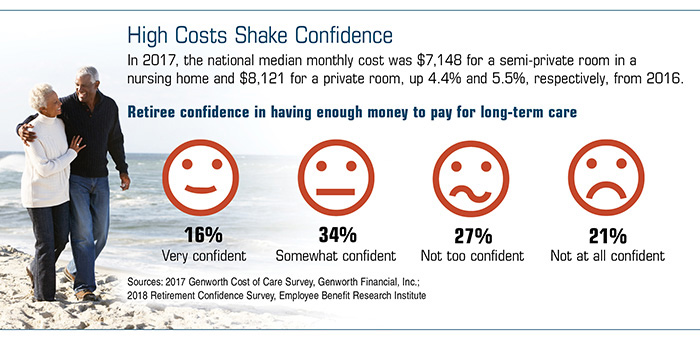Pacific Prime for Dummies
Pacific Prime for Dummies
Blog Article
All about Pacific Prime
Table of Contents4 Simple Techniques For Pacific PrimeHow Pacific Prime can Save You Time, Stress, and Money.Pacific Prime Fundamentals ExplainedSome Of Pacific PrimeNot known Details About Pacific Prime

This is because the information were collected for a period of strong financial performance. Of the approximated 42 million individuals that were uninsured, just about concerning 420,000 (regarding 1 percent) were under 65 years of age, the age at which most Americans become eligible for Medicare; 32 million were grownups in between ages 18 and 65, about 19 percent of all grownups in this age; and 10 million were youngsters under 18 years old, about 13.9 percent of all children (Mills, 2000).
These quotes of the variety of persons without insurance are generated from the yearly March Supplement to the Existing Population Survey (CPS), conducted by the Census Bureau. Unless or else kept in mind, national price quotes of people without medical insurance and percentages of the populace with various kinds of protection are based upon the CPS, one of the most widely used source of price quotes of insurance policy coverage and uninsurance rates.
6 Easy Facts About Pacific Prime Explained

Still, the CPS is especially helpful because it produces yearly price quotes reasonably promptly, reporting the previous year's insurance policy protection estimates each September, and because it is the basis for a consistent set of price quotes for greater than 20 years, permitting for analysis of patterns in protection over time. For these reasons, along with the considerable usage of the CPS in various other research studies of insurance coverage that exist in this report, we rely upon CPS price quotes, with restrictions kept in mind.

The price quote of the number of without insurance individuals broadens when a population's insurance policy condition is tracked for several years. Over a three-year duration starting early in 1993, 72 million people, 29 percent of the united state populace, were without protection for at least one month. Within a solitary year (1994 ), 53 million individuals experienced at the very least a month without protection (Bennefield, 1998a)
Six out of every ten without insurance adults are themselves employed. Working does boost the chance that one and one's household members will have insurance policy, it is not a guarantee. Even participants of family members with two permanent wage earners have almost a one-in-ten opportunity of being uninsured (9.1 percent uninsured price) (Hoffman and Pohl, 2000).
3 Simple Techniques For Pacific Prime
New immigrants account for a substantial proportion of individuals without medical insurance. One analysis has actually attributed a considerable portion of the current development in the size of the U.S. uninsured populace to immigrants who showed up in the nation between 1994 and 1998 (Camarota and Edwards, 2000). Recent immigrants (those who came to the United States within the past 4 years) do have a high price of being uninsured (46 percent), however they and their youngsters account for just 6 percent of those without insurance coverage nationally (Holahan et al., 2001).
The connection in between wellness insurance and access to care is well developed, as recorded later on in this phase. Although the relationship between health insurance and health results is neither direct nor simple, a substantial professional and wellness solutions study literature links health insurance coverage to improved access to care, much better high quality, and enhanced personal and population health and wellness condition.
Levels of analysis for checking out the results of uninsurance. This discussion of medical insurance protection focuses primarily on the united state populace under age 65 since practically all Americans 65 and older have Medicare or various other public insurance coverage. Moreover, it focuses particularly on those without any medical insurance for any type of size of time.
Pacific Prime for Dummies
The troubles encountered by the underinsured remain in some areas comparable to those encountered by the without insurance, although they are generally less severe. global health insurance. Uninsurance and underinsurance, however, involve distinctly different plan issues, and the techniques for addressing them may vary. Throughout this research and the five reports to adhere to, the major emphasis gets on individuals with no health insurance coverage and therefore no support in paying for healthcare beyond what is available via charity and safety and security internet establishments
Wellness insurance policy is a powerful element affecting invoice of care because both people and medical professionals reply to the out-of-pocket cost of services - https://issuu.com/pacificpr1me. Wellness insurance policy, nonetheless, is neither essential neither enough to get to clinical solutions. The independent and direct impact of health and wellness insurance protection on accessibility to health and wellness services is well established.
Others will get the health and wellness care they need even without medical insurance, by spending for it expense or seeking it from carriers that provide treatment complimentary or at extremely subsidized prices. For still others, health and wellness insurance alone does not make sure receipt of treatment as a result of various other nonfinancial barriers, such as an absence of health and wellness treatment service providers in their neighborhood, limited accessibility to transportation, illiteracy, or linguistic and cultural distinctions.
The Definitive Guide for Pacific Prime
Official research regarding without insurance populations in the United States dates to the late 1920s and very early 1930s when the Board on the Price of Treatment created a collection of records concerning financing physician workplace visits and hospitalizations. This problem ended up being prominent as visit the site the varieties of medically indigent climbed up throughout the Great Clinical depression.
Report this page